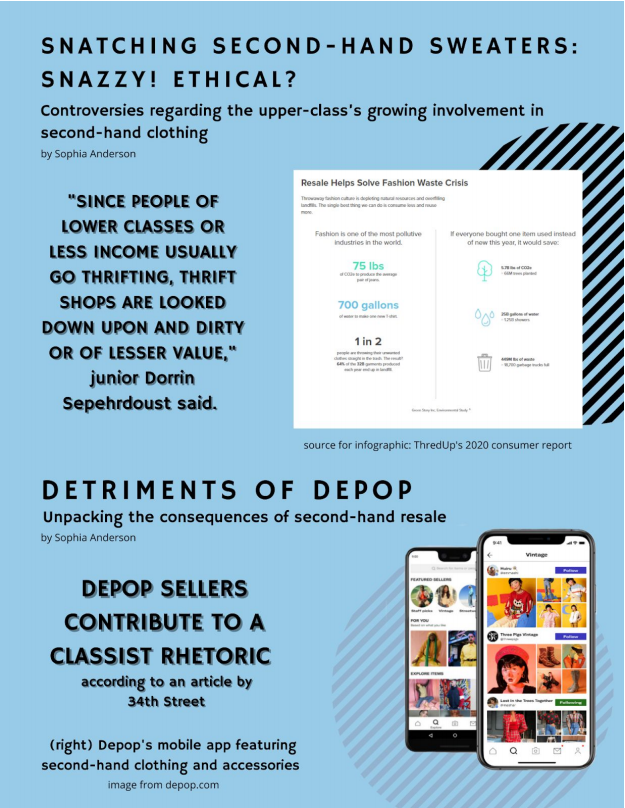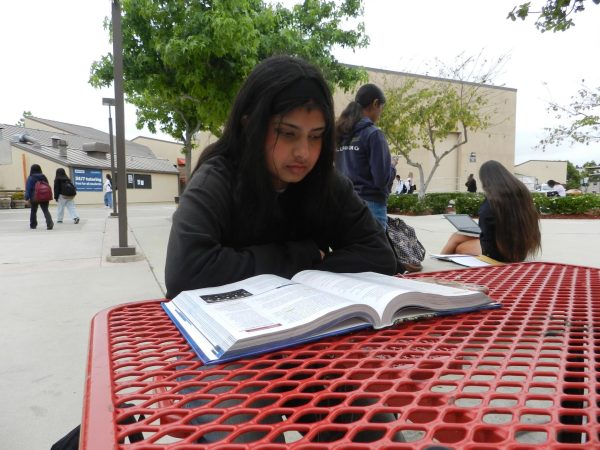Snatching second-hand sweaters: Snazzy! Ethical?
Controversies complicate the upper-class’s growing involvement in second-hand clothing.
Many teens and millennials are embracing the positive aspects of thrifting- cheaper prices, less waste, diverse options- but are also observing the associated stigmas.
“I know a lot of people who resort to classism and automatically assume things about someone else’s socio-economic status based on whether they thrift” sophomore Manassaa MeenakshisundaramGowri said.
Junior Dorrin Sepehrdoust echoes MeenakshisundaramGowri’s assessment of thrifting stigmas.
“Since people of lower classes or less income usually go thrifting, thrift shops are looked down upon and dirty or of lesser value,” Sepehrdoust said.
Thrifting has undergone various criticisms as it has gained popularity.
“As someone who is more social justice oriented and is concerned about the inequities in our society, I can see some of the downsides of the popularization of thrifting and shopping second hand” history teacher Alexandra Sheridan said.
“I think thrifting has a positive kind of a positive light. But I think if you were to go back a few years…it would have definitely been a lot different,” MeenakshisundaramGowri said.
Both Sheridan and Gregory said that thrifting was unenjoyable when it was a necessity, but became a hobby later in life. Even as thrifting becomes more normalized, research shows that lower and middle class shoppers generally have different attitudes and motivations regarding second-hand clothes as compared to upper class shoppers.
“[Upper classes] glamorizing the idea of thrifting combats excessive materialism,” Tough To Tame, an online coalition that reports on pop culture controversies, said.
Other sources are more critical regarding the expanding popularity of thrifting among wealthier consumers who disrespect the significance of thrift stores. “The upper class essentially sees it as a toy store…like a kind of playground,” Brigham Young University researcher Spencer James said in an interview with The State Press.
Classist rhetoric aside, donation based thrift stores have no shortage of clothing available to shoppers, regardless of their socio-economic status. According to Green America, 700,000 tons of surplus second-hand clothing are shipped to other countries annually.
Some interviewees had concerns that by thrifting they would be “stealing from the lower classes”.
Gregory thinks otherwise. “I don’t think anyone’s taking away anything from anyone else…We’re not going to run out of product. Trust me.”
To access the Tough to Tame article, click here. To access the article by the State Press, click here. To access the article by Green America, click here.
Your donation will support the student journalists of Woodbridge High School. Your contribution will allow us to purchase equipment and cover our annual website hosting costs.

Hey-o Warriors! My name is Sophia Anderson and I am thrilled to act as your 2021-2022 Arts & Entertainment Editor. As a certified Choir Kid™ myself,...







